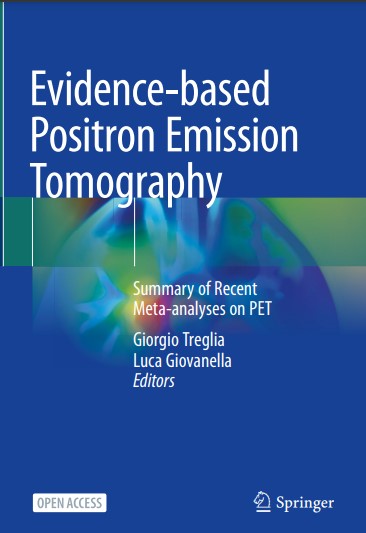Evidence-based Positron Emission Tomography
Editorial: Springer Nature
Licencia: Creative Commons (by-nc-nd)
Autor(es): Treglia, Giorgio y Giovanella, Luca
Positron Emission Tomography (PET) is an imaging technique performed by using positron emitting radiotracers. Positron decay occurs with neutron-poor radionuclides and consists in the conversion of a proton into a neutron with the simultaneous emission of a positron (β+) and a neutrino (ν). The positron has a very short lifetime, and after the annihilation with an electron simultaneously produces two high-energy photons (E = 511 keV) in approximately opposite directions that are detected by an imaging camera. The PET scanning is based on the so-called annihilation coincidence detection (ACD) of the 511 keV γ-rays after the annihilation. Tomographic images are formed collecting data from many angles around the patient by scintillating crystals optically coupled to a photon detectors used to localize the position of the interaction and the amount of absorbed energy in the crystals.
[2020]
Compartir:
Una vez que el usuario haya visto al menos un documento, este fragmento será visible.


